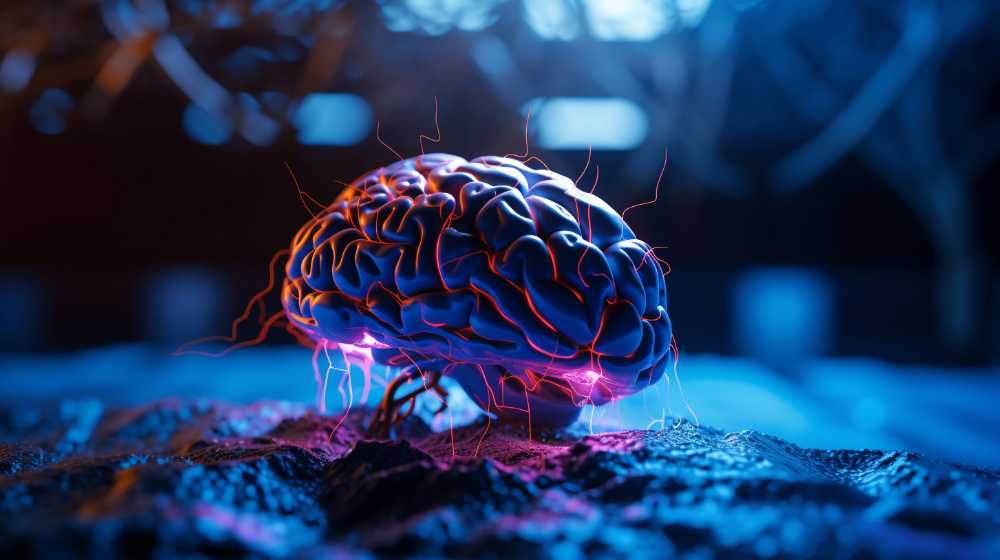
Binaural Beats: the hype surrounding relaxing sounds
Content
Imagine being able to dive into a state of deep relaxation, embark on a creative journey, or enhance your concentration and mental clarity simply by listening to binaural beats, specially composed sounds with headphones on.
Doesn’t that sound like magic? Well, it’s not exactly sorcery, but it’s definitely a fascinating field known as brainwave entrainment that aims to unleash the full potential of our minds. Don’t worry, it’s not as esoteric as one might think. In fact, there’s a psychoacoustic phenomenon behind it that can’t even be explained by simple physics.
Analyzing Binaural Beat
In this article, we will focus on a specific aspect of brainwave entrainment: the binaural beat combined with auditory beats. These particular sounds are designed to synchronize our brainwaves to specific frequencies, thereby producing different effects on our minds and well-being, such as reduced anxiety and other potential benefits. There are also isochronic tones that are said to enhance the flow state, but let’s first take a look at how binaural beats are created.
We will explore the mechanisms behind binaural beats, examine whether they have measurable effects on our brain activity, and delve into the potentials they could offer for our daily lives.

So grab your headphones, lean back, and get ready to dive into the amazing world of binaural beats. Whether you’re seeking more relaxation, a creative boost, or enhanced mental performance, binaural beats might be exactly what you’ve been looking for.
What are Binaural Beats and How Do They Work?
The phenomenon known today as binaural beats was first described by the German physicist Heinrich Wilhelm Dove in 1839. Binaural beats work by using two tones and stimulating both ears with two tones with slightly different frequencies, which is perceived as a pulsating tone. The exact sound of this tone depends on the frequency difference between the two tones.
However, this only works with headphones, where each ear can hear only one tone completely isolated. This creates a third tone in our brain – an auditory illusion. It can’t be fully explained by physics, but it can have an impact on our heartbeat or even mood. Hence, the term psychoacoustics is needed because physics reaches its limits here.
It’s important not to confuse this phenomenon called a binaural beat, with sound interference—a topic I wrote my thesis on over a decade ago 😉 For example, in beats produced by sound interference, two sound waves of different frequencies meet, combine, and the average of both frequencies causes the perceived sound to fluctuate in volume. However, no third tone is created; it’s a measurable vibration. Binaural beats, on the other hand, only emerge in the brain as auditory illusion.
Overlapping Signals in the Auditory Pathway
Both ears perceive different frequencies and transmit them as signals to the auditory pathway, which ends in the temporal lobe of our brain. It’s through the interaction of nerve signals in the auditory pathway—specifically at the superior olivary complex, a cluster of nerve cells in the brain—that binaural tones are created.

Therefore, soundproof stereo headphones are essential for perceiving binaural beats because they ensure that the different frequencies are isolated and auditory beat stimulation meant for the left ear actually only reaches the left ear, while binaural beats meant for the right ear only reach the right ear.
So when the both ears are stimulated with slightly different frequencies of 450 Hz and 440 Hz, a difference frequency of 10 Hz appears in the brain. This is how binaural beats are generated.
But wait a moment, we humans can actually only hear frequencies from a minimum of 20Hz to about 20,000Hz. That’s exactly what makes it interesting. This third tone must therefore be within the audible spectrum in order for us to hear it. Here is a link on Wikipedia for you to listen to it. But what happens when the difference tone falls below 20Hz and we can no longer hear it? We may not be able to hear the tone anymore, but it is measurable. And can still induce an auditory beat stimulation.
Here we enter the world of electroencephalography (EEG), where electronic brain waves are measured, and it is actually possible to observe “something happening in our brain.” This is also referred to as the alpha, beta, delta, and theta frequency ranges. But more on that later.
Distinguishing binaural beats from binaural audio
“Binaural beats” are often confused with “binaural audio,” especially since both work best with headphones. Admittedly, the terms are very similar. While binaural beats are created by frequency differences and are limited to frequency ranges below 20Hz, binaural audio refers more to spatial hearing. It creates the impression that you can localize sound around you with headphones. If you want to learn more about how the binaural beat sound works for 3D audio localization, you can check out this article on binaural sound.

The influence of listening to binaural beats on our brain?
But what effects can such frequencies called a binaural beat have on our brain? Even if they are not audibly perceivable, the sounds seem to have an impact on us. Some say they reduce anxiety, others say it improved memory or their sleep quality. To answer the question if prolonged exposure to binaural beats actually has an improvement to our lives, we first need to take a brief look at the human neuroscience, how our brain functions.
An insight into our control center
The fascinating phenomenon of brain waves gives us insight into the electrical activity of our cerebral cortex. Does our brain function electrically, like an electric car?
Personal supercomputer with super performance
Well, imagine the brain as a huge supercomputer made up of nearly 86 billion tiny cells called neurons. When we see, hear, smell, or do anything, our sensory organs send signals to the neurons in the brain.

The neurons in the brain are like tiny switches that can be turned on or off. They also have an axon, which resembles an insulated electrical cable, through which they can send signals to other neurons. When neurons transmit signals, there are changes in their membrane potential. They actually send signals electrically. These electrical signals can be measured as waves and are the origin of our brain waves.
But how can we look into the activity of our brain? How can we measure and understand the mysterious electrical impulses that occur in our brain? An intriguing method that allows us to glimpse brain activity – something that would otherwise be hidden from us – is electroencephalography, or EEG for short.
The brain in measurement – EEG
In EEG, the electrical activity of the outer layers of the cerebral cortex is recorded using electrodes placed on the scalp. These electrodes detect voltage fluctuations in brain areas generated by brain waves. They are described based on their frequency and amplitude, which allows us to draw conclusions about specific patterns of activity.
It’s amazing how sensitive EEG is. The recorded electrical voltage ranges from just 1 to 200 microvolts (μV). That’s incredibly tiny! Therefore, the measurement requires highly precise techniques to capture these delicate signals and analyze their frequency.
Artefacts that won’t make you rich
However, EEG is also highly susceptible to signal disturbances known as artifacts. These disturbances can arise from the blinking of participants’ eyelids and eye movements, as well as external influences such as electromagnetic fields.

To ensure the most artifact-free measurement possible, specially equipped laboratories are required. These laboratories have electromagnetically shielded rooms to minimize external disturbances and obtain accurate data.
However, the challenges of EEG do not end with measurement. Further signal processing and analysis of the raw EEG data require a lot of effort and expertise. Therefore, I am still somewhat skeptical about the real effects of binaural beats. They are measurable, but they require some practice. That’s why I have already delved into the technique consciously and composed suitable music for brain waves.
The data must be carefully analyzed, filtered, and interpreted to obtain meaningful information about brain activity. It is a complex discipline that requires both technical know-how and a deep understanding of neuronal processes, precisely what we need to answer our question.
Brain Waves – the frequencies of our brain
Brainwave frequencies range from 0.5 to 32 Hz. To allow for better interpretation of the measurements, researchers have further divided these different frequency bands and assigned them Greek letters.
This allows us to associate specific ranges of brain waves with different mental states of activation. We have delta, theta, alpha, beta, and gamma waves. Each one include a certain frequency. One should not imagine that individual frequencies are measured here. Instead, a spectrum is measured, an area, similar to what is known in audio engineering. These binaural beats can activate beta frequencies, for example, and in theory, more electrical impulses can be measured here.
Attentive Beta Waves
When we focus on the awake consciousness of a healthy adult, beta waves (β) dominate, with a beta frequency range between 13 and 32 Hz. These are associated with mental activation.
Gamma Waves make our heads spin?
And then there are the high-frequency gamma waves (γ) with frequencies above 32 Hz. In contrast to delta waves, these are associated with the highest mental activation. However, they are also associated with meditation. Gamma waves are interesting but challenging to study. They have a high frequency and low amplitude, which means that they are difficult to detect in routine clinical EEGs. To make gamma waves visible, scientists use special spectral analyses in the frequency range.
Finding peace with Alpha Waves
But what happens when we close our eyes and find peace? Then alpha waves (α) take over on the electroencephalogram. They have frequencies of 7-13 Hz.
Theta Brain Waves during Rapid Eye Movements
These relaxing alpha brain waves are then replaced by slower theta waves (θ), which have frequencies between 4 and 7 Hz. By the way, theta waves are also dominant during the REM sleep phase and accompany our dreams.
Delta Brain Waves during deep sleep stage
However, when we enter the deep sleep stage, slow delta waves (δ) with frequencies between 0.5 and 4 Hz are primarily observed. These delta waves are deep and indicate that we are in a deep sleep state.
The study and exploration of brain waves provide us with exciting insights into the functioning of our brain and the different mental states we go through.
Resonating in Harmony: The Principle of Synchronization
This phenomenon of synchronization is based on a physical principle known as resonance. It is the tendency of two oscillating systems, whether living or inanimate, to oscillate at a common frequency.
Perhaps you are familiar with this example: If two pendulum clocks are placed together in a room and left for long enough, they will eventually start swinging in the same rhythm. This principle was already documented in 1665 by the physicist Christian Huygens, who observed the synchronization of pendulum clocks.
Being on the same wavelength with friends
Interestingly, the principle of synchronization is not only evident in physics but also in social psychology. When people come together and interact, their brain waves tend to synchronize to similar frequencies.
This leads to a kind of harmonic interplay and can explain why we sometimes feel a deeper connection with other people. This fascinating phenomenon of brainwave synchronization has already caught the attention of researchers who have conducted studies on it. The term used for this is coherence and it is definitely interesting in the context of immersive group experiences.

Brainwave Entrainment (BWE) – Discovering the Rhythmic Harmony of the Brain
The electroencephalogram (EEG) provides a fascinating insight into the neurological processes of our brain. Since the early days of EEG research, various brainwaves have been associated with specific diagnoses and states of activation. But what if we could deliberately stimulate brain waves to induce a characteristic pattern in the EEG? That is precisely the goal of Brainwave Entrainment (BWE).
BWE aims to generate a synchronized pattern in the EEG by intentionally stimulating brain waves. By gradually synchronizing brain waves, the power density in the power spectrum of the activity of the brain shifts, leading to different mental states. This opens up various possibilities to gain awareness of different mental effects, mood states.
The technique of BWE has been the subject of scientific investigations since the 1970s. Studies have shown, for example, that BWE can have an impact on performance and mood, and that the corresponding brain wave activity can be measured on the scalp. It has also been documented that BWE, in conjunction with theta waves, increases suggestibility. Still further research needs to be done.
The demonstrated effects of binaural auditory beats essentially range between relaxation (delta to alpha waves) and attention (alpha to gamma waves), analogous to natural EEG power patterns and the associated experiences. This lets researchers assume binaural auditory beats work on different brain regions. However, there is a lack of convincing evidence for noise-like effects, as sometimes advertised on the internet.

From Frequencies in EEG Experiments
If we combine our knowledge of brain responses, brainwave entrainment, binaural beats, and the principle of synchronization, we might conclude that the brainwaves in our heads (as an oscillating, or vibrating, system) should synchronize with the binaural beats as “sound vibrations” in their frequency.
So, it could be possible to induce specific states of consciousness through binaural beats. But is this really the case? Does it have such an effect?
Researchers conducted various experiments using EEG. In these studies, they examined the influence that the binaural phenomenon had on people’s attention and state of consciousness. If binaural tones had an effect on our brains, it should also be measurable in the EEG.
However, no changes in the EEG were observed, it couldn’t be said for sure that binaural beat audio files or technology enhance EEG power. That makes at least sure there’s no scientific evidence to support the claim binaural beat audio files alone can heal neurological disorders, improve our working memory or lessen our pain perception.

Do binaural beats have an effect?
Does this mean that the hype surrounding binaural beats is nothing more than hot air? Probably not. Even though as mentioned earlier direct effects on brain waves could not be measured, we are well aware of the impact that music has on our perception, performance and emotional arousal.
It can relax us, lift our mood, help us fall asleep or stimulate us for cognitive enhancement. Psychological research and human neuroscience definetely support the idea, that music has potential benefits, adding to encourage relaxation.
Some people claim that binaural beats are dangerous. However, they are merely the result of neural processes in our brains, specifically our auditory pathway reacting to a different frequency or sound level. As an audio producer, I believe that for most people, what they hear is more interesting than whether there is a difference in frequency during binaural beats.
And if you listen to the binaural beats found on YouTube, you would most likely describe them as relaxing music—something to unwind with on a Friday evening after a stressful week. Great danger to body or mental health? Probably not.
Binaural Beat Technology: Effects, and Miracle Solution?
It is important to note that Brainwave Entrainment is not a miracle solution and its effects can vary individually. Each person may react differently to the stimulation of brain waves, and the effects on the mental state can vary.

There are numerous applications for Brainwave Entrainment, from meditation and relaxation techniques to enhancing learning or sports performance. It is also used in therapy to support the treatment of sleep disorders – to help people fall asleep-, ADHD or to reduce anxiety. It offers a non-invasive and natural method of influencing the brain wave activity and promoting good physiologic effects. In any case, more research on this fascinating topic needs to be done.
Overall, binaural beats show us that our brains are capable of responding to external rhythmic stimuli and adjusting their activity. Brainwave entrainment utilizes this principle to achieve positive effects on our own mental health and well-being. It is a fascinating opportunity to harness and consciously direct our brains.
Binaural Beats for Enhanced Learning and Creativity:
The topic has already gained traction on the internet. For some people, binaural beats are a way to enhance concentration and promote creative thinking. By skillfully combining frequencies and sounds, binaural beats can stimulate the brain and induce a state that improves attention and focus.

Binaural beat technology using audio for activating brain waves can also support neural communication in the brain, which can have a positive impact on creative thinking. By using high-quality audio tools and precise sound recording, binaural beats can be generated with high precision to achieve the desired effects on concentration and creativity. In the world of sound technology, binaural beats offer exciting possibilities to enhance the listening experience and further explore the potential of the human brain.
There are plenty of playlists available on YouTube and Spotify that are often labeled with buzzwords like ASMR, bilateral music, or 8D audio. However, these are different hypes from the world of immersive audio. Therefore, the topic often carries a certain marketing factor. But there are better ways to utilize how 3D audio can be successfully used in marketing in 2023.
Meditation and Restful Sleep with Binaural Beats:
The application of binaural beats in relation to meditation and restful sleep is a fascinating field in sound technology. By deliberately using different frequencies and sounds, binaural beats can support deep relaxation and a meditative state. It is said that it can also slow down the respiratory rate. Binaural beats are often used for relaxation and promoting rest, as well.
It is important to note that many people may not use the technique of binaural beat audio correctly. An anecdote from my own experience: A common mistake is that some individuals do not use headphones while sleeping and instead place their mobile phones next to their pillows to listen to binaural beats. Although this improvised method may not have the intended effect, some people may still subjectively achieve positive results. In that sense, have a restful sleep and good night!

Binaural Beats from an Expert’s Perspective
Although further research is needed, they show promising psychologic and physiologic effects as brain responses. Said effects reach from reduced anxiety, over emotional arousal and different mood states to even reduce stress. They fascinate and captivate millions of people on the internet. Immerse yourself in the fascinating world of binaural beats and learn more about how they can influence your listening experience. If you have any questions or are interested, I am here to provide advice on immersive audio.
Get in contact